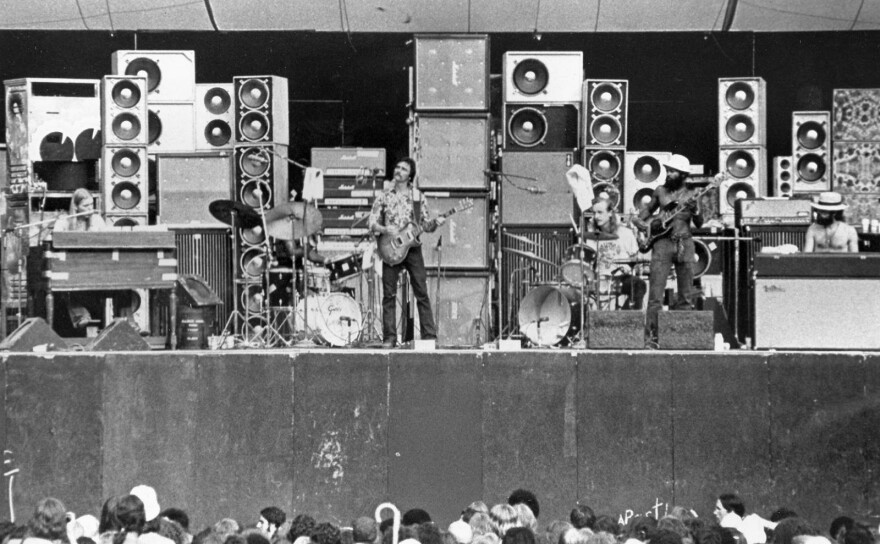Good news for Deadheads: This weekend dozens of local and national musicians will come together in Flagstaff to pay tribute to the Grateful Dead. Over the course of two days, they’ll interpret the band’s music and recreate the Dead’s landmark 1973 performance at the Watkins Glen Summer Jam festival in New York State that also featured the Allman Brothers and the Band. In the latest installment of KNAU’s series Eats and Beats: Stories About Food and Music on the Colorado Plateau, we hear from musician and Grateful Festival mastermind Tony Abrams about his lifelong love of the Dead that started at his first show.
Tony Abrams: It was quite the experience. In ’87 I went to my first show. I was a kind of scared to go in. I was with some friends and we kind of waited ‘til the second set and just blown away by the scene and the community and the people. I’ve always had an infatuation with Volkswagen Buses, and people say, they’re a band beyond description and it’s tough to put words to describe—they use the word family a lot. The ’60s never faded in the sense that people want to help each other out. They want to make sure everyone can get food, get drink and get to the next show have a place to stay—there’s room in our campground. We’ve evolved a little more, but I think that sense of community—it’s nice to be part of something and I think a lot of people are longing and yearning to be part of something. The Grateful Dead has only gotten bigger.

Americana, bluegrass, jazz—all of those for me came through the Grateful Dead. I wouldn’t say I have a PhD in Deadology, but so much of their influences from the ’60s—the jug band, Jerry being a banjo player and a lot of the musicians they favored. And Jerry’s side projects—they played a lot of the ’50s R&B-type stuff and doo-wop-style music. It was a gateway in a good way.

We came up with the name Grateful Festival obviously as a nod to the Grateful Dead, but more just to be appreciative and thankful, and mindfulness of where we are. We get to look out the window and see a mountain with snow and hail on it. Just to take step away and be grateful for the opportunities we have and the beautiful place we get to live.

We’re doing a tribute to the Watkins Glen July 28th, 1973 Summer Jam, which at one point was the largest concert in history. Over 600,000 attendees, close to 700,000 people. At one point on the East Coast one in four people between the ages of 18 and 30 were in attendance there. That day celebrated the Allman Brothers, who were the headliners that night, then the Band.

For years I’ve been trying to make this happen and it’s a passion project. It’s a silly hippie dream. I’ve put together a great lineup of bands from Phoenix and Tucson; flying in someone from Seattle, flying in someone from Denver. But other than that all the bands are Arizona-based. The Grateful Dead has stood the test of time—50-plus years now and it keeps changing. And that’s a good thing.









